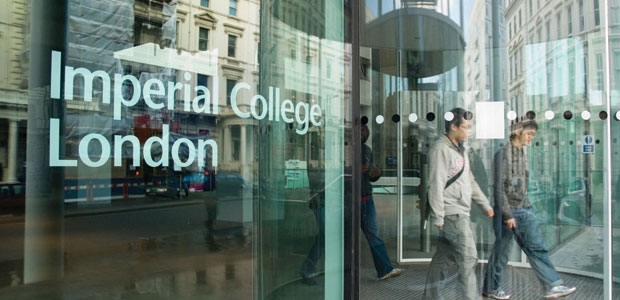
Source: Alamy
Competition and collaboration; home and abroad; public and private. Put them together and what have you got? The future, argues Alice Gast.
Research and education are global pursuits and their relevance to society has never been greater. I am privileged to begin my leadership of Imperial College London at a time when its strengths in research and contributions to society are growing in importance and momentum, both domestically and internationally. But it is Imperial’s web of global collaborations, partnerships and joint ventures that will allow the institution to thrive for generations to come.
One need only look across the campuses of universities in the top ranks of these league tables to see that great education by definition is global, with brilliant students flocking to them from all corners of the world. They are attracted to the likes of Imperial, not only because of the opportunities created by excellent teaching and research, but also because of the thriving intellectual and entrepreneurial atmosphere on offer (in our case heightened by being situated in what may be the world’s most global city).
At Imperial, about half of our students come from outside the UK, as do almost as many of our academics. Their presence creates ties that span disciplines, cross national boundaries and endure for lifetimes.
Just as students benefit from a university environment that represents the global spectrum of cultures and values, so does research: it is interesting that such a fiercely competitive endeavour benefits so greatly from international collaboration, essential to building the best and most competitive research teams. We compete better when we collaborate effectively with our competitors, and quality and impact rise.
As former president of Lehigh University and one-time vice-president for research at the Massachusetts Institute of Technology, I have long been a proponent of international collaboration. At Imperial, I see research on many fronts advancing through this strategy. The grand challenges facing the world and the complex approaches required to surmount them are too big for individual universities; they need integrated international teams. Whether it is with China’s Tsinghua, Zhejiang or Peking universities, Singapore’s Nanyang Technological University, Stanford University in the US, Qatar Petroleum and the Qatar Science and Technology Park, the São Paulo Research Foundation in Brazil or the Korea Advanced Institute of Science and Technology in South Korea, Imperial’s academics are doing much more than they could alone.
The international scope of these collaborations is surpassed only by the astounding breadth of topics covered. For instance, one day this summer, I noted three such Imperial partnerships in one Google alert: collaborative research with the King Abdullah University of Science and Technology, Saudi Arabia, resulting in a technique for making light-sensitive diodes through “adhesion lithography”; work with the Academia Sinica in Taiwan leading to the discovery of a new family of antibacterial toxins from Agrobacterium tumefaciens that could open up fresh approaches to protecting hosts from bacterial infection; and a study by Imperial and the Christian Medical College in Vellore, India, suggesting that stronger immunity to polio could come from combining injected and oral vaccines.
These examples illustrate the great pace of collaborative and translational work in universities today. They also serve notice that the most impactful – from novel sensors and photonic devices to therapies for disease – are both of and for the world.
Why are such team efforts and collaborations important? Because excellent education and research are no longer enough. Governments and societies worldwide, whether recovering from post-crisis austerity or growing rapidly into emerging powers, are seeking solutions to increasingly complex societal problems.
Universities must respond by helping to speed up and scale up the process from conception to commercialisation, and demonstrate the value that comes from ideas.
A large part of our answer is Imperial West, a new 25-acre innovation district. This hub of activity in West London will create space to bring together thousands of researchers and entrepreneurs to translate discovery into benefit. It is well connected to the capital’s TechCity and MedCity ecosystems, plus corporate partners, governments and universities from the UK and around the world. Entrepreneurs, investors and inventors alike are attracted by the possibilities created by Imperial West.
In the close proximity that the innovation district provides, research teams and entrepreneurs benefit from their diversity of backgrounds and approaches when striving to understand new discoveries, develop ideas or solve difficult problems. One friend described this to me as analogous to “hybrid vigour” – the beneficial qualities of cross-breeding in plants.
As you build a team, you bring together diverse people to provide the most effective views. Individuals brought up in different educational systems and with exposure to different societies and markets approach problems differently: thus, international teams broaden and augment individual thinking.
Research and education have never been more important to the world, and the international pursuit of them has never been more vigorous, competitive and collaborative. The future holds great challenges, but great universities will meet them by joining forces.
Competition and collaboration are two sides of the same coin. We can, and must, bet on both.
Alice Gast, president, Imperial College London
Register to continue
Why register?
- Registration is free and only takes a moment
- Once registered, you can read 3 articles a month
- Sign up for our newsletter
Subscribe
Or subscribe for unlimited access to:
- Unlimited access to news, views, insights & reviews
- Digital editions
- Digital access to THE’s university and college rankings analysis
Already registered or a current subscriber?